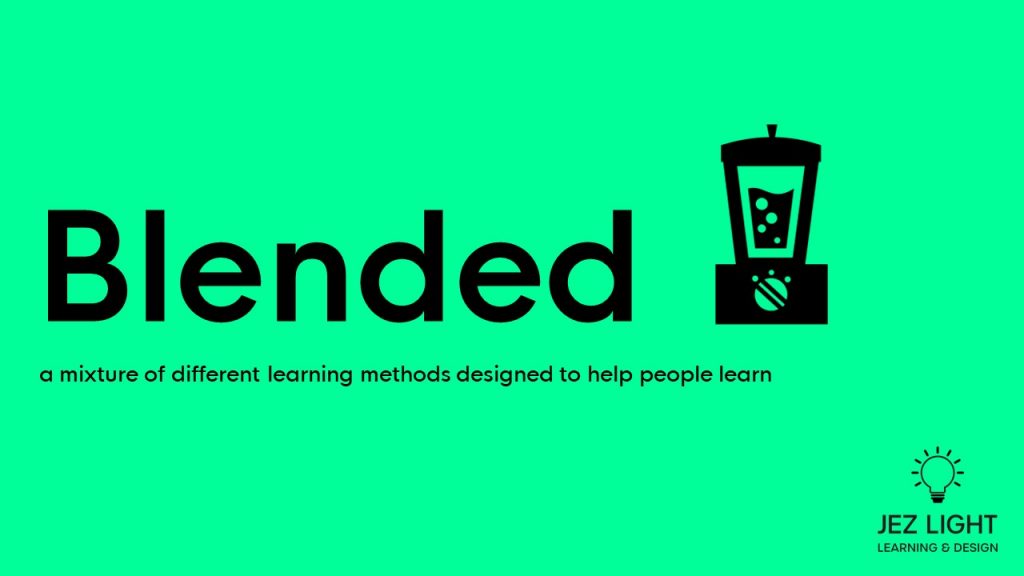Blended Learning – How it works for us.
Technology is changing the world. And fast.
For trainers and those who teach, the impact has been huge. In the last 15 years, technology-driven learning has completely changed the training landscape. For the better.
For some of you of a certain age, (not us of course), you might remember Overhead Projectors and the incredibly thin transparent acetate sheets that you hand drew with marker pens as a pre-cursor to PowerPoint. At the time, these were the latest thing. I did not mourn when these faded away. Not one bit. In fact, they are dead to us.
The other thing that started to fade away around that time was traditional classroom style training. It just didn’t fit the needs of an ever busy, always thinking of profit business.
Nowadays most businesses worth their salt will always look for a blended learning solution of some sort, whether it’s using their own tools, external suppliers, or simply utilising the resources that have been gifted to us by the introduction of the world wide web.
While most businesses we work with are not fully abandoning the conventional modes to solely favour online learning, blended learning is emerging as a preferred route. Making sure that learners have access to the right skills and knowledge to meet the business requirements and goals, companies are choosing blended learning because they realise that plain, non-interactive online or standalone face-to-face training sessions just don’t do it anymore.
SO, WHAT IS BLENDED LEARNING ANYWAY?
In a nutshell. A blended learning program should contain some media, some human touch, some classroom elements and some web-based training. It basically makes the most out of all the elements available and therefore engages learners with different styles and keeps learning fresh and interesting. It can even mean fully online virtual classroom training…more likely if you’re one of those lucky people with a super strong, faster than a speeding bullet 5G signal!
This learning approach works best for organisations because it ticks so many boxes, which is why it has become a bit of a buzzword in the business world.
It’s worth remembering that creating a blended learning package can take more time as either the business, or the learning provider needs to identify the right content online or within platforms. It’s not quite so ‘off-the-shelf as training has been in the past.
A WORD OF CAUTION…
Just like everything in life, moderation is your friend.
Not every course, session or programme has to be blended. Sometimes if just doesn’t lend itself to the topic in hand or the style of the material. Don’t force it. Implement carefully and with thought and it will work.
Ultimately, we know the blended learning can build a learner’s efficiency because they can learn at their desk, on the go, whilst sipping a Starbucks (other coffee brands are available) and most importantly at their own pace. Self-paced elements take the stress away from the learner.
We work hard to keep our content up to date, relevant and engaging. We use PowerPoint, but we do it in a way that engages and supports rather than taking over and causing sleep paralysis. We always include interactive activities, face to face, video learning and engaging case studies to bring the learning to life. We also help to keep learning alive by providing follow up content in the forms of useful links and videos.
One of the latest things we have worked on with clients is the use of chat groups with cohorts of training courses both pre-courses, during and post course. Software like Microsoft Teams allows us to communicate better, engage and chase progress and even the ability to share videos and short clips to the group to help them learn. We love teams and it seems our clients and their people do too.
This kind of chat software feels natural these days, and comfortable for most learners. We have even started sharing the post course surveys via this medium to make it a seamless experience for the learners. And all in one place.
WHY ARE WE DOING IT?
There are many reasons – one of which is that we move with the client and learners – we won’t be left behind!
We know that every learner’s needs are different and it’s important for us to try to meet everyone’s needs so our course to be effective. We also know when to use it, and when to stick to the old-fashioned way – sometimes it just works!
At Learning & Design we know that blended learning brings a stack of benefits for trainers and learners and it is worth its weight in gold. With blended learning, trainers are better able to bridge knowledge gaps and help learners reach their full potential. We’re not saying we are leading the industry, not by a long shot, but we are playing the game and adapting to give the best offer we can to our clients and their learners.
IN SUMMARY
The world is changing, you must change with it.
Nowadays you can watch a YouTube video on how to do pretty much anything. I can now fix the pesky unreliable pilot light on my boiler, that would have cost me a call out fee 3 years ago. All by watching a step by step video.
The way people learn is changing. If you want to improve information retention, engagement, and learning then blended learning is more important than ever.

